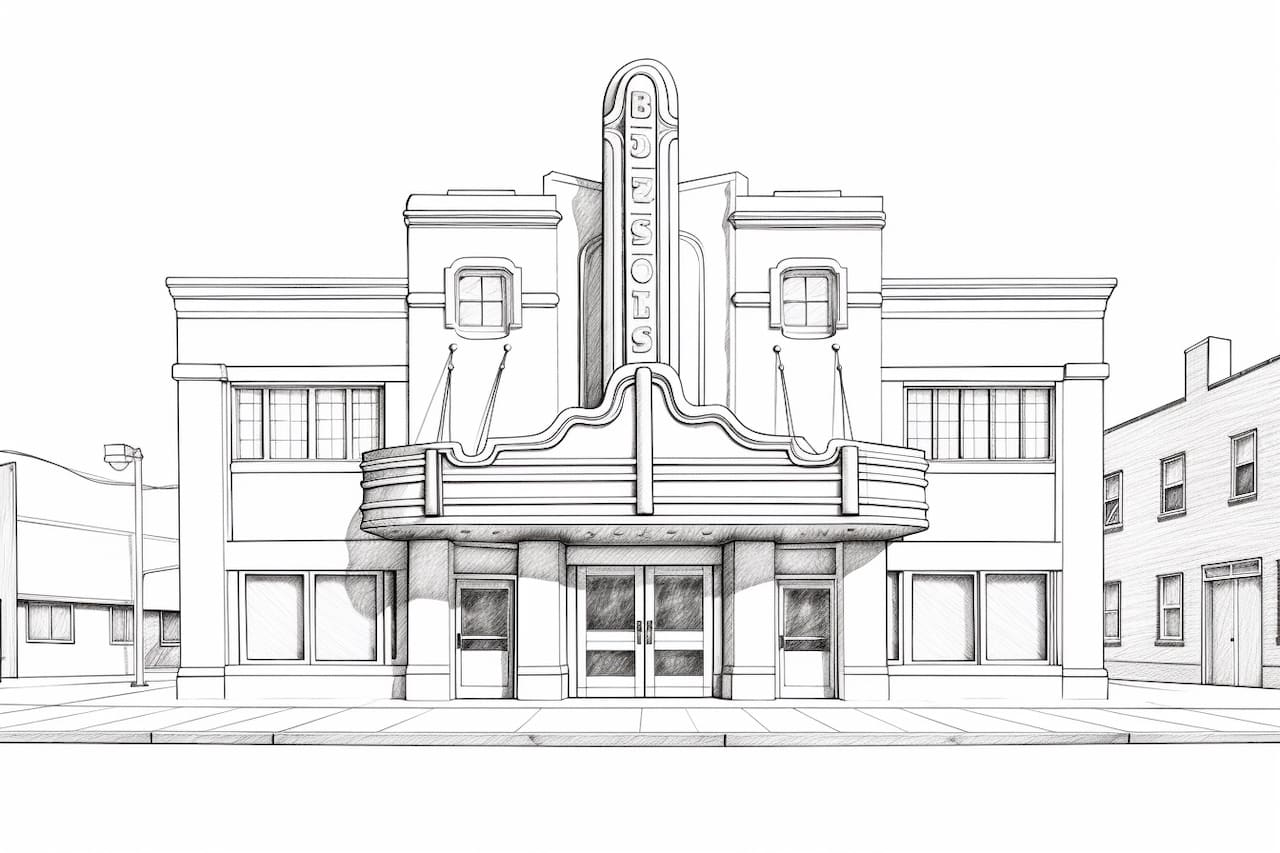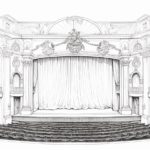Are you ready to unleash your inner artist and draw a movie theater? Whether you’re a movie buff or just enjoy capturing architectural details, this step-by-step guide will walk you through the process of how to draw a movie theater from start to finish. With clear and concise instructions, you’ll be able to create a realistic and detailed representation of this iconic building. So grab your drawing supplies and let’s get started!
Materials Required
Before diving into the drawing process, gather the following materials:
- Drawing paper or sketchbook
- Pencil
- Eraser
- Fine-tip black marker or pen
- Ruler
- Compass
- Colored pencils or markers (optional)
With these materials at your disposal, you’ll have everything you need to bring your movie theater illustration to life.
Step 1: Sketch the Basic Outline
Begin by lightly sketching the basic outline of the movie theater. Start with a rectangular shape for the main structure. Use your ruler to ensure straight lines and maintain the proportions. Pay attention to the angles and perspective, as a movie theater often has a sloping roof and façade. Remember, it’s better to start with light, loose lines that can easily be adjusted than to press firmly and struggle with erasing later on.
Step 2: Add Architectural Details
Now it’s time to add architectural details that give your movie theater character. Begin with the entrance, drawing double doors or a grand entrance with a marquee. Add windows along the sides of the building, and consider including decorative elements such as columns or a ticket booth. Take your time and be mindful of the proportions and details that make your movie theater unique.
Step 3: Incorporate Signage and Branding
A movie theater isn’t complete without signage and branding. Add a sign above the entrance, displaying the name of the theater or a catchy slogan. You can also include movie posters or banners advertising upcoming films. Pay attention to the typography and graphics, as these elements can add a lot of visual interest to your drawing.
Step 4: Capture Lighting and Shadows
Lighting and shadows play a crucial role in capturing the ambiance of a movie theater. Take a moment to observe how light interacts with the building. Sketch the areas that are hit by direct light, as well as the shadows cast by architectural elements. This step adds depth and dimension to your drawing, making it more realistic and three-dimensional.
Step 5: Refine the Details
Now it’s time to refine the details of your movie theater drawing. Use a fine-tip black pen or marker to outline the main features and architectural elements, emphasizing the lines that make up the building. Take your time and be patient with this step, as it can significantly enhance the overall quality of your illustration.
Step 6: Add Color (Optional)
If you’re in the mood to add a splash of color to your movie theater drawing, now is the time to do it. Use colored pencils or markers to bring your illustration to life. Consider the color scheme of the theater and the surroundings, and experiment with different shades and techniques to achieve the desired effect. Remember, coloring is optional, and your drawing will look just as fantastic in black and white!
Step 7: Final Touches
Once you’re satisfied with the colors and overall appearance of your movie theater drawing, take a moment to assess it as a whole. Are there any areas that need refinement or additional details? Use your pencil or eraser to make any necessary adjustments. Don’t be afraid to step back and examine your drawing from different angles to ensure it looks cohesive and well-balanced.
Conclusion
Congratulations! You have successfully drawn a movie theater from start to finish. By following these step-by-step instructions, you’ve learned how to capture the architectural details, lighting, and branding that make a movie theater unique. Whether you choose to use colored pencils or keep it simple with black and white, your drawing is a testament to your artistic skills. So go ahead and proudly display your masterpiece, and keep exploring your creativity with more architectural drawings in the future.









